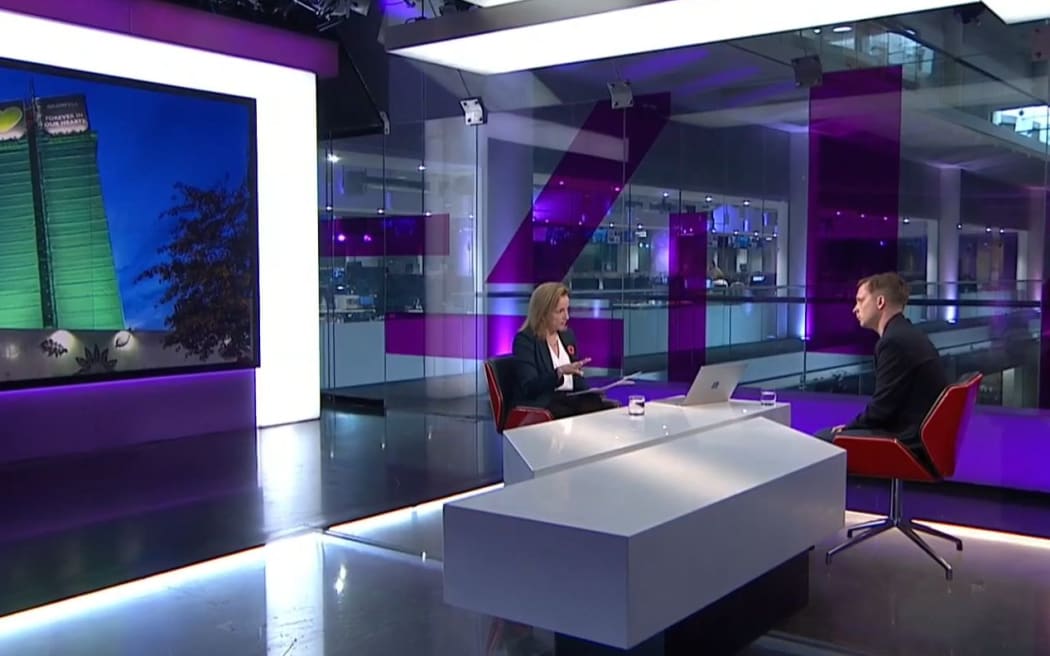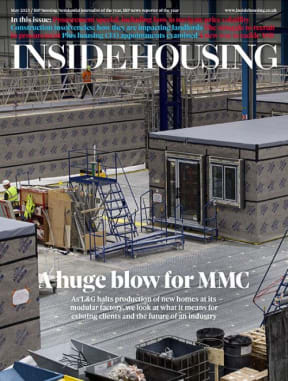Years before the Grenfell Tower fire killed 72 residents, it was foreshadowed by another fatal fire in London which was not adequately investigated. A journalist who has worked on that story for six years so far tells Mediawatch New Zealand media must pursue what went wrong at Loafers Lodge and it could prevent something worse happening in future.

Photo: AFP
In the confusion and chaos of the Loafers Lodge fire, a local fire chief called it a "once-in-a-decade fire".
That gave some idea of the seriousness of it but still did not quite convey the horror.
It was only last Tuesday - more than a week later - that police formally released names of the first three victims.
Among them was Michael Wahrich - who was known to many Wellingtonians as Mike the Juggler.
Stuff and the capital's daily The Post reported his death before it was confirmed by police because his sister confirmed it.
That confused followers of local Facebook page Wellington Live which had posted earlier that Mike had survived the fire, which then drew angry condemnation from some users who accused the site's editors of 'role-playing' as journalists.
They weren't satisfied by administrators explaining it was an open group which members could contribute to - and the misleading post about Mike Wahrich was removed the same day it appeared.
For the news media, there is an added complication. A man has been charged with arson in relation to the fire. He behaved erratically in court where the judge ordered interim name suppression and remanded him in custody.
Any further reporting on that is effectively off limits until he appears in court again.
On Monday, The Post's Tom Hunt reported Loafers Lodge had just one working ground-floor exit after the main entrance was locked shut due to damage in the days before the fire.
We have also learned Loafers Lodge is just one of a growing network of hostels, motels and boarding houses housing some of New Zealand's most vulnerable and poorest people - but we do not even know how many there are.
A Parliamentary inquiry report into boarding houses cited MBIE and Fire Services databases which suggested there were between 500 and 550 boarding houses - but that was in 2014. Only 48 of them had sprinkler systems, according to Stuff's Steve Kilgallon, who said the $300,000 cost of creating a national register was cited as a reason why it had not been done in 2012.
Last Tuesday RNZ’s Phil Pennington reported many councils are falling behind with issuing building warrants of fitness (BWOFs) and doing annual inspections to check safety systems in residential buildings approved by commercial inspectors.
The Ministry of Business, Innovation and Employment changed its monitoring in 2020 to make it quicker because “there had been insufficient improvement in councils' performance."
MBIE’s annual stocktake in 2022 found too few onsite audits being done and too few infringement notices being issued - and "a high number" of councils had compliance schedules that did not comply with building laws.
On Friday RNZ’s Soumya Bhamidipati reported Auckland Council is only inspecting BWOF-approved residential buildings once every three-to-five years.
Auckland Council told RNZ there was currently no legislative requirement for property owners or managers to register their property as a boarding house.
The Council told RNZ about 120 building owners were currently being investigated or prosecuted for “illegal boarding house activities” and that there could be “more than 400 such properties.”
Loafers Lodge housed people who could not buy or even rent properties from those who own them.
Journalist Bernard Hickey said The Loafers Lodge fire exposed New Zealand's twin crises of inequality and housing, which were subjects he wrote about a lot. He said he lived not far from the Loafers Lodge for years and often wondered who lived there and what it was like.
"But like most, I didn't have much insight into the nature and danger of life inside such a place," he wrote.
He was not alone in that, but since the tragedy, people usually invisible in our media have been heard.
"I've read online and on social media saying that this was a place for the vulnerable. I don't consider myself a vulnerable person. It's just at the moment there's a struggle with housing," Loafers Lodge resident Chris told The Guardian's reporter Tess McClure.
The shadow of Grenfell

Peter Apps of UK publication Inside Housing with an mage of Grenfell Tower on UK's Channel 4. Photo: screenshot / Channel 4 News
The day after the fire, RNZ's Phil Pennington told Morning Report what one of the firefighters had told him: "I wonder if this is our Grenfell moment."
A fire killed 72 residents of Grenfell Tower in June 2017. The circumstances of that were very different to Loafers Lodge, but both disasters raised big questions about the adequacy of social housing, the response to safety concerns of people living there, and the capability of the emergency response.
Veteran British Channel 4 news presenter Jon Snow was confronted angrily by Grenfell residents when he turned up there. They told him they felt ignored by media when they raised newsworthy safety fears before the disaster.
It hit home.
"We can accuse the political classes for their failures, and we do, but we are guilty of them ourselves," Snow told a conference of media people later in 2017.
"We are too far removed from those who lived their lives in Grenfell and who, across the country, now live on amid combustible cladding, the lack of sprinklers, the absence of centralised fire alarms and more -- all revealed by the Grenfell Tower," he said.
Among those who did know about that were journalists at specialist UK publication Inside Housing.
"[After Grenfell], we decided quite early on that we were experts in this area compared to other journalists. And so we had to really make the most of that by focusing on the policy failures, because there was a narrative at the top, straight after the fire, that this was a horrific one-off," said Sophie Barnes.
She said it was actually "a horrific example of a much wider problem".
Barnes sent official information requests to all councils in the country asking about their fire risk assessments. She received 436 fire risk assessments in return, and reported the scale of fire safety issues: 268 tower blocks had problems with fire doors, 71 had no emergency lighting, 54 had no ventilation in escape routes.
To mark the one-year anniversary of Grenfell, Barnes carried out a further investigation: this time analysing more than 1500 tower blocks or about 40 percent of social housing in total across the UK. There were still widespread problems with doors, emergency lighting and signage.
Barnes is now an investigative reporter at one of the UK’s biggest national newspapers, the Daily Telegraph.

Photo:
Her former colleague Peter Apps, now Inside Housing's deputy editor, last year published the book Show Me The Bodies - How We Let Grenfell Happen.
It was described by The Times in London as a "forensic book indictment of the construction industry and regulators".
"You get a kind of low-probability event like (Grenfell Tower) - or what I presume has happened in Wellington - but it comes from a set of circumstances which make it possible. And it's likely that if that's possible in that one block, it's likely to be possible in another," Apps told Mediawatch.
Inside Housing launched a 'Never Again' campaign for immediate action to implement findings from Grenfell Tower.
"Sometimes people say after an event like this you can't politicse a tragedy and you've got to mourn first and then talk about the reasons afterwards. I think that that's a mistake, from the media's perspective, because there's a short period when people are listening and that window will close," Apps told Mediawatch.
"If you're not talking about the things that need to change at that time, you're going to find that you're talking about them at a time when nobody's listening to you," he said.
"Building up data is important in proving this isn't just a one-off. You can get information out of public bodies (in the UK). It is laborious but it's an important role the media can play," he said.
"Fire disasters in the UK do always seem to take place in homes for the people with the least choice about where they live," he said.
"We had a fire in 2009 in building called Lakanal House which killed six people and the story wasn't really followed up, to be honest. But the issues were so similar. If a journalist in the UK had been able to get under the skin of that and exposed what was the lessons were, we might not have had the second catastrophe, which was much worse," he said.
"As bad as what's happened in Wellington is, you now have the opportunity to prevent that happening again, or prevent it happening in an even worse fashion. That's something that the media can contribute. Stay with this story over the next few months and even years as the situation and the details emerge, because they won't have yet. If the media is patient enough, there's probably a story that matters a great deal."
Inside Housing journalists also visit buildings where they record shortcomings in safety and maintenance and report the lack on progress.
"If you can ... get down there. The landlord of an organisation or a press office will give you assurances about how seriously they take safety, but you can test that and speak to the people in those buildings about whether things are taken seriously or not," Apps said.
"For the most part, (residents) want people to listen to them and to understand. I think you'd find your background and your outlook on life is maybe a lot less different from them than you think."
The final report of the official Grenfell Tower inquiry will not be published until 2024 - seven years after the disaster.


